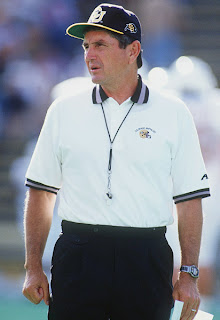In light of the 70th anniversary of the Japanese attack on Pearl Harbor, it seems fitting to reflect on the ways in which minorities sometimes re-imagine—or revise—a country’s civil religion in response to persecution or discrimination. Incarcerated Japanese and Japanese Americans reconciled their commitment to the United States with the nation’s betrayal in a number of ways, but given the time of year, I’ll focus on one: incarcerees used Christmas celebrations to simultaneously demonstrate patriotic loyalty and protest their current treatment.
In 1942, war hysteria coupled with economic and political pressures led government officials to exile and incarcerate 115,000 Japanese nationals and their children (U.S. citizens) from the Pacific Coast. A small minority repatriated, but the vast majority wanted to remain in their chosen nation.
When I began exploring the religious life in Minidoka Relocation Center (a camp of 9,000 in southern Idaho), the quantity, quality and variety of material objects associated with Christmas jumped off the screen. (www.densho.org is an extraordinary resource for researching or teaching the incarceration.) Photographs, oral histories and newspapers documented the annual decorating contests between housing blocks.
Eager for a creative outlet, incarcerees assembled elaborate displays comparable to those found in department store windows. Some shouted patriotic messages like this portrait of Uncle Sam with Santa Claus.
 |
Photograph courtesy of National Archives and Records Administration |
Others juxtaposed incarcerees’ commitment to the American way of life with their current circumstances. A two-part display called “Santa Remembers Minidoka” expressed this complexity succinctly. The first scene, “Seattle 1941,” depicted a family-oriented Christmas scene in a typical American home, while “Minidoka 1942” contained a rough model of the camp set in front of a gloomy Idaho landscape painting.
 |
Minidoka Christmas Display resembling “Christmas 1941” Photograph courtesy of National Archives and Records Administration |
 |
Minidoka Christmas Display, “Christmas 1942” Photograph courtesy of National Archives and Records Administration |
The display insinuated that the community would have continued celebrating Christmas in an American manner, but was forced to improvise in an impersonal, unpleasant institution. When outsiders saw photographs of this exhibit in Portland newspapers, I wonder if they recognized the irony or saw what they expected and wanted to see—non-threatening minorities celebrating a quintessential American holiday.
The Christmas displays were only one example of this phenomenon. Similar modifications were visible in Christmas cards from Minidoka, one of which transformed a common image—snow covered houses—into a dark, haunting depiction of dilapidated barracks. Muddy paths surround the latter, not a forest floor or wide expanse covered in pristine, glistening snow. The contrast of light and dark is enough to show observant viewers that this revision of a holiday staple contained a more complex message.
The Christmas displays were only one example of this phenomenon. Similar modifications were visible in Christmas cards from Minidoka, one of which transformed a common image—snow covered houses—into a dark, haunting depiction of dilapidated barracks. Muddy paths surround the latter, not a forest floor or wide expanse covered in pristine, glistening snow. The contrast of light and dark is enough to show observant viewers that this revision of a holiday staple contained a more complex message.
 |
Courtesy of Shosuke Sasaki Collection, via densho.org |
 |
Minidoka Relocation Center |
Christmas in America is not simply a religious occasion, and for the vast majority of Minidokans, the holiday was about doing something American, not doing something Christian. At most, a quarter of the incarcerees were Christian. During World War II, Christmas symbolized what the country was fighting for—hope and love, home and family, peace and goodwill toward men—and its observance became a patriotic act. This sentiment was reflected in the patriotic or secular decorations and participants’ defensive insistence that Buddhists could “do” Christmas just as well as anyone else. In fact, the men and women who first conceived of the decorating competition were Buddhist, not Christian.
Readers might object that these displays and cards hardly constitute protest, but I disagree. The U.S. government characterized Japanese American incarcerees as submissive compatriots, but recent scholars argue that retaining cultural arts like ikebana and sumo was an act of resistance. The Christmas celebrations were a more nuanced expression of resistance and Americanism. However, I don’t argue that anti-incarceration sentiments were necessarily placed in displays or cards intentionally, but rather that these sentiments organically manifested themselves within creative works. In Artifacts of Loss: Crafting Survival in Japanese American Concentration Camps, Jane Dusselier argued that artwork enabled incarcerees to “[reposition] themselves in hostile environments.” Their adaptation of civil religious customs was personalized to match their experience in America. Decades ago, James Scott urged scholars to look for hidden layers of meaning within the art and literature of oppressed people. This is one such case.
Editors' Note: Religion in the American West is happy to welcome our new contributor, Anne Blankenship. Anne is a PhD candidate at the University of North Carolina. She will continue her discussion of civil religion in internment camps on Memorial Day, where she will show how incarcerees engaged and transformed the American frontier myth.









